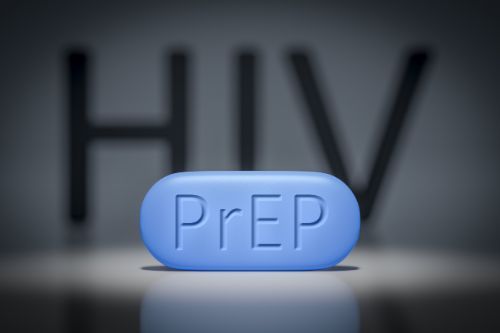Infection
Rejected Claims for PrEP Linked to New HIV Diagnoses
It has long been established that PrEP plays a significant role in preventing new HIV infections. However, there can be barriers to care that decrease uptake of these medications due to a variety of reasons.
A new study presented as a poster at IDWeek 2023 titled “The Real-World Impact of Pre-Exposure Prophylaxis (PrEP) Prescription Uptake and Dispensing Status on HIV Infection Risk in the US” explored patients’ ability to secure PrEP, time to dispense it, and the potential relationship with HIV.
Investigators led by Li Tao, MD, PhD, looked at patients receiving tenofovir disoproxil fumarate/emtricitabine (TDF/FTC; Truvada) or tenofovir alafenamide (TAF/FTC; Descovy) for PrEP between January 2019 to February 2023 who were selected from a de-identified prescription claims database (IQVIA Longitudinal Access and Adjudication Dataset).
Key Takeaways
- Individuals facing barriers to accessing Pre-Exposure Prophylaxis (PrEP) for HIV prevention, particularly those with rejected claims (ND-R) or abandoned claims (ND-A), had a significantly higher risk of new HIV diagnoses.
- The research underscores the importance of timely access to PrEP in preventing new HIV infections.
These individuals were categorized into 3 groups:
- ≥1 PrEP claim dispensed (DISP);
- never had PrEP dispensed with ≥50% of claims rejected by payer (ND-R);
- and never had PrEP dispensed with ≥50% of claims abandoned (ND-A).
Over a 12-month timeframe from when the first PrEP claim was submitted, investigators assessed risk of HIV diagnoses, calculated as the number of new HIV infections diagnosed, divided by the total number of individuals x 100, in each cohort. They used logistic regression to calculate odds ratios (OR) and 95% CIs of HIV infection by cohort and time to dispense.
Overall, 522,273 individuals were included in the analysis, of which 88% had a PrEP claim dispensed (DISP); 7% never had PrEP dispensed with ≥50% of claims rejected by payer (ND-R); and 5% never had PrEP dispensed with ≥50% of claims abandoned (ND-A). Those in the ND-R and ND-A cohorts had a 95% and 38% higher risk of new HIV diagnosis, respectively, compared to those in the DISP cohort, the investigators reported. Among those with rejected or abandoned claims, the delayed time to medication dispersement was significantly linked to an approximately 20% increased risk of acquiring HIV.
Notably, additional analyses demonstrated that new HIV diagnoses were lowest among cisgender men with a dispensed claim (n=404,109; 2.1% incidence rate) compared with the highest rate of new HIV diagnoses among transgender women and men with abandoned claims (n=652; 6.1% incidence rate and n=408; 4.6% incidence rate, respectively). New HIV diagnosis rates were also highest among individuals with sexually transmitted infections in the rejected or abandoned cohorts (n=6379; 8.1% and 5.4% incidence rates, respectively).
These findings “underscore the urgent need to remove barriers to PrEP from a prescription perspective to end HIV transmission,” the investigators concluded.
Click here for more coverage of IDWeek 2023.

